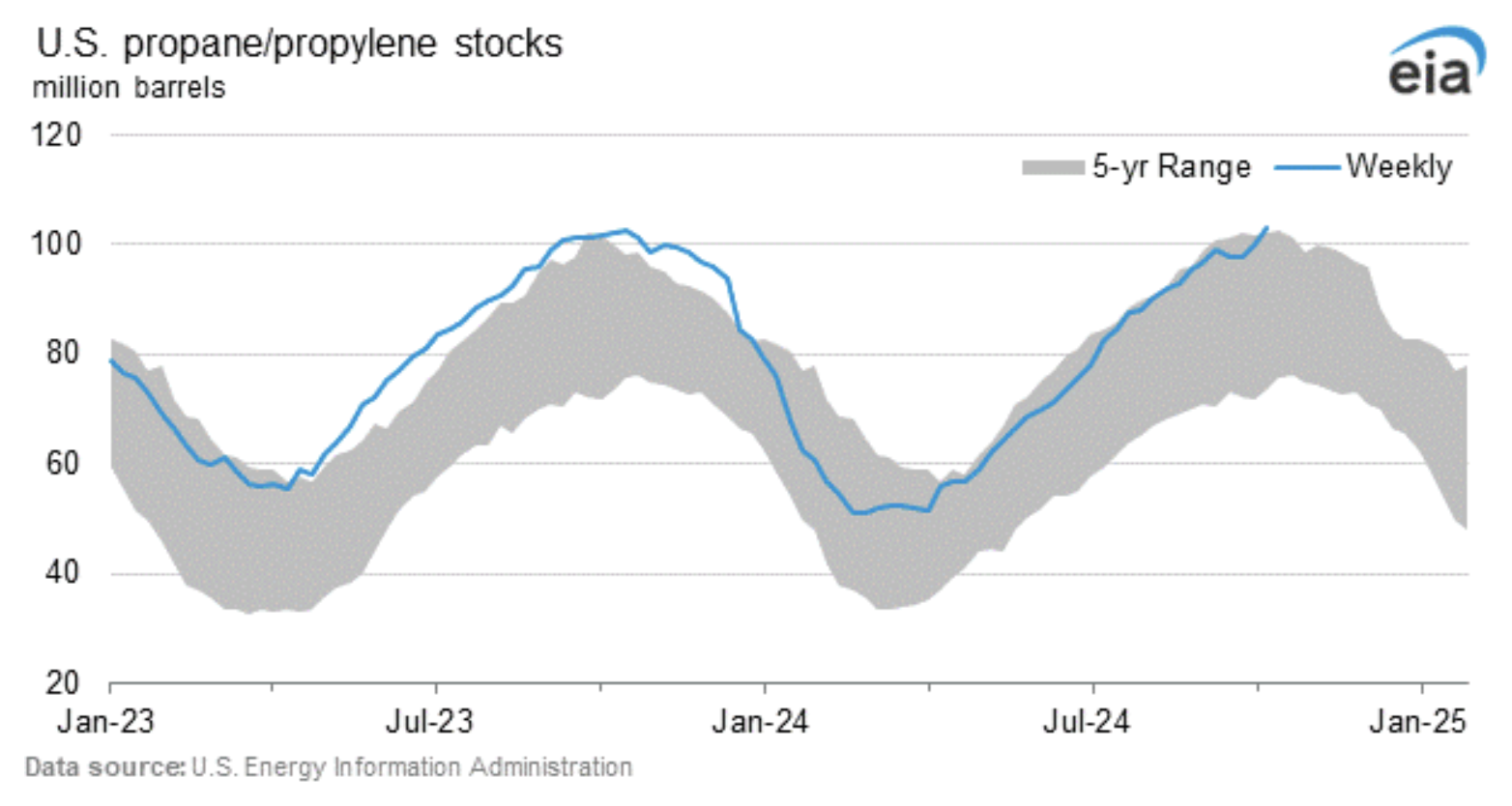Winter Propane Preview: Supply, Demand & Pricing

“In their darkening autumnThe maple leaves can’t stayBut blossom brilliantly anyway.”
Propane Supply.
Propane supply shouldn’t be an issue this winter as national inventory levels just breached the 103 mmbbls. mark – a new record high. The previous record build was 102.8 mmbbls. for the week ending November 20, 2015.
Bear in mind, though, only about 70% of what we consider U.S. propane supply has been fractionated and is ready for sale.

Propane Demand.
Stronger than projected demand could be an issue this winter.
Why? Well, we’ve had several mild winters in a row. And spot prices last winter were often lower than term values. Wouldn’t it be natural for some retailers to think: “I should have contracted less and bought more spot.”
We saw a similar situation develop during the winter of 2017-2018. A cold winter followed several mild winters and a lot of folks suddenly needed a lot more propane.
I worry that our industry could possibly need between 49 and 155 million spot gallons from Ohio and Pennsylvania eastward into New York and New England if we have a colder winter than last year.
Some Math, With Some Assumptions.
Residential gallons in these 10 states add up to roughly 1.3 billion gallons or 975 million winter gallons. Let’s say that half of all retailers contracted 10% less than they did last winter (which was very mild) or about 49 million gallons.
Many prominent weather services have been forecasting a change between El Nino and La Nina weather influences for the October-March period. They all seem to be leaning towards a warmer than normal winter. But that doesn’t mean that we won’t see more heating degree days than last winter.
NOAA’s Climate Prediction Center is also leaning towards a warmer than normal winter for the East and the South, but says: “During La Nina events, the northern part of the United States typically sees colder and stormier winter conditions.”
Also, the EIA recently forecasted that propane consumption could rise 11% this winter. That would add another 107 million additional (spot) gallons needed to the 49 million gallons mentioned earlier.
What Can You Do?
It’s too early to tell what winter will bring. But it’s important to remember that it takes time to procure large quantities of propane to meet significant spot demand.
The best advice:
- Work off the top of your storage tanks.
- Schedule ahead.
- Perform ratably on your supply contracts. (This helps keep railcars moving back and forth and pipeline supply moving in and out).
- Communicate what your spot needs will be as early as possible.
The Skinny
Time will tell what winter will bring. For now, there’s plenty of propane in the U.S. and October prices are low.
Demand could be stronger this winter than what’s been contracted, mainly because we’ve had several mild winters in a row and spot prices were sometimes lower than term values.
Still, there’s no need to panic or buy additional propane now unless you’re sure that you’ll need it. We could have another mild winter. The bottom line is that good, regular communication between you and Ray Energy could be especially important this winter.
Most importantly, please remember that regardless of what Mother Nature throws at us, Ray Energy will always be there for you!
Get Stephen's insights on propane delivered to your inbox every month. Sign up for our monthly newsletter here.
For more frequent updates and industry news, join us on LinkedIn.
NOTE: The views and opinions expressed herein are solely those of the author, unless attributed to a third-party source, and do not necessarily reflect the views of Ray Energy Corp, its affiliates, or its employees. The information set forth herein has been obtained or derived from sources believed by the author to be reliable. However, the author does not make any representation or warranty, express or implied, as to the information’s accuracy or completeness, nor does the author recommend that the attached information serve as the basis of any buying decision and it has been provided to you solely for informational purposes.
© 2011-2024 Ray Energy Corp. All rights reserved. Any reproduction, representation, adaptation, translation, and/or transformation, in whole or in part by whatsoever process, of this site or of one or several of its components, is forbidden without the express written authorization from Ray Energy Corp.

